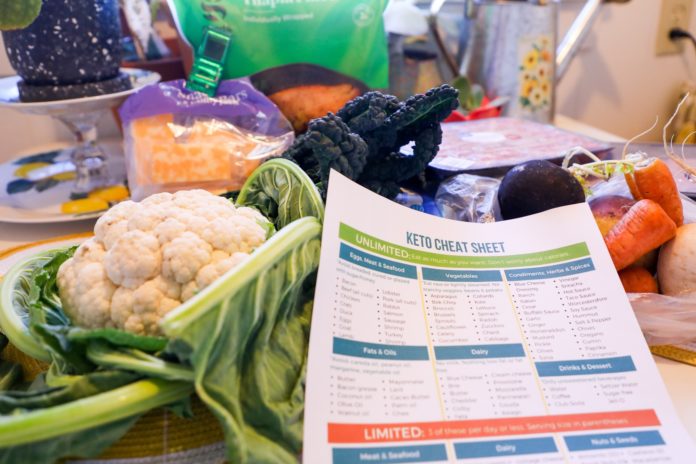
By Olivia Martin | Social Media Editor
One of the most popular diets of 2020 was the Keto diet. This high fat, low carb diet essentially alters the way food is metabolized and puts the body into a state of Ketosis where fat is being burned into energy. What most people do not know is that the Keto diet is a medical dietary intervention for a very specific population, that is, people (mostly children) with epilepsy.
Fad diets want people to believe that they are useful and practical for everyone when, in fact, only very small populations are in need of following these restrictive diets.
As with any other societal trend, fad diets change over time and are solely based on cultural standards, not on scientific research. Although some people have had short term success with various fad diets, ultimately the long term results will not be there. Some of the most common fad diets include: Keto, Whole 30, Gluten-free, Anti-inflammatory diets, Paleo and Vegan.
Adjunct nutrition lecturer and registered dietitian Courtney Anderson explained the “five ways to distinguish if a fad diet is really a fad diet.”
“The first is if it promotes some sort of quick fix,” Anderson said.
For example if a diet includes a time frame, such as the Whole 30 diet does, it is considered a fad diet.
Next, if it is promoted on social media or through advertisements containing some type of magic food or supplement, it can be considered a fad diet. It is common for fad diets to be marketed as having a magical remedy or even a pill to take that promises quick results.
The third check to look for is if it excludes or severely restricts specific food groups, said Anderson. Many fad diets will completely eliminate one entire food group, which research actually shows is not at all necessary for a healthy lifestyle.
Anderson said if a diet has rigid rules that focus on weight loss, one can definitely conclude it to be a fad diet.
“The way that our culture is in America, weight loss is a very prestigious thing that people are always trying to obtain and unfortunately, [it] make fad diets really enticing,” Anderson said.
Lastly, if a diet makes claims based on testimonials or a single study it’s a fad diet. Anderson said typically, a fad diet will take one line off of a research article making it seem more scientific and credible, when it is actually just seducing the person into believing the false claims fad diets make.
Youngstown, La., junior Morgan Uebinger explained the dangers behind cutting out an entire food group, like many fad diets require.
“If you cut out a full food group from your diet, you cut out a ton of nutrients that your body depends on,” Uebinger said.
Not only will your body lack various nutrients by cutting food groups out, but other negative side effects may occur such as fatigue and lack of energy.
One of the biggest issues people face with fad diets is not being able “stay on track” because the requirements are too rigid. Instead of trying out various fad diets that won’t give long term results, Uebinger encouraged people to try and increase the amount of whole foods and vegetables into one’s diet.
“Finding ways to incorporate [vegetables] into your meals is not that hard,” Uebinger said. “Smoothies are a great way to get some greens into your body first thing in the morning.”
She also said meal prepping is another great way for people to stay on a plan without restricting food groups.
“The more you plan,” said Uebinger, “the more likely you are to stay on track.”
Anderson also recommends checking out the USDA myplatediagram, which is a really simple graphic that produces an individual dietary lifestyle that is very simple and easy for people to follow.
According to Anderson, the best way to maintain a healthy lifestyle is not going to be through following fad diets, but instead by eating a balance of all five of the major food groups, which includes fruits, vegetables, grains, protein and dairy.





